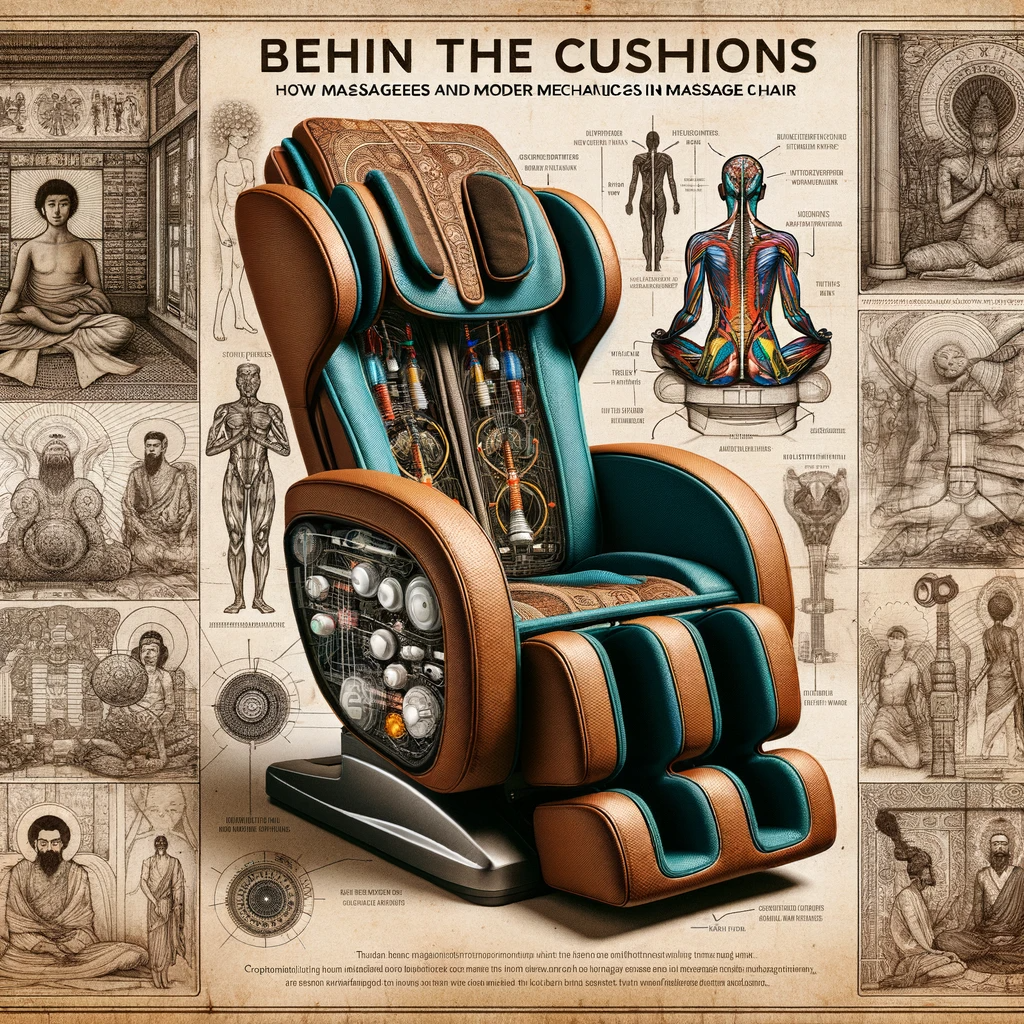How Massage Chairs Work and Their Historical Roots
From ancient hands to modern mechanics, learn how massage chairs work and their rich history. Dive into a journey spanning millennia!

Massages have been a treasured form of relaxation for millennia. Fast forward to the 21st century, and we find ourselves asking: How do massage chairs work to encapsulate this ancient art? Unearth the roots and journey with us through time to see the evolution of massage, from hands to mechanics.
A Glimpse into Ancient Massage Practices
Massage, as a healing technique, traces its origins to various ancient civilizations. The Egyptians, Chinese, Greeks, and Indians all had their unique massage practices:
- Ancient China: The earliest references to massage appear in Chinese medical texts from 2700 B.C. They believed in the therapeutic properties of touch and developed their own techniques, which would later influence Japanese Shiatsu.
- Ancient Egypt: The Egyptians practiced reflexology, a technique that involves applying pressure to specific points on the hands and feet.
- Ancient Greece: The Greeks recognized the benefits of massage for athletes. Athletes were often massaged before their events to improve performance.
- Ancient India: Ayurveda, the traditional Indian system of medicine, has incorporated massage with medicinal oils and herbs as part of its holistic healing approach for over 5,000 years.
The Rise of Mechanized Massage
As civilizations advanced, the need for more consistent and readily available massage techniques grew. The industrial revolution marked the beginning of the mechanization of many processes, including massage.
- Early Mechanical Devices: In the late 19th and early 20th centuries, mechanical massage devices began to emerge. They were rudimentary, often hand-cranked, and designed to simulate human touch.
- The Advent of Electric Massage Chairs: The 1950s witnessed the birth of the first electrically operated massage chairs. They were simple in design, primarily focusing on vibrating mechanisms.
Modern Massage Chairs: A Fusion of Tradition and Tech
Today’s massage chairs are sophisticated devices that combine traditional massage techniques with advanced technology:
- Sensors and AI: Modern chairs are equipped with sensors that detect tension points. With the help of artificial intelligence, these chairs can tailor the massage to individual needs.
- Multiple Techniques: From Shiatsu to Swedish, modern chairs offer a variety of massage techniques, imitating human hands with a combination of rollers, airbags, and heat elements.
- Customization: With user profiles and memory functions, these chairs remember preferences and provide a personalized massage experience every time.
Conclusion: Embracing the Future while Honoring the Past
While the mechanics and technology behind massage chairs have evolved dramatically, the underlying principles remain rooted in ancient practices. These chairs serve as a testament to humanity’s continuous quest for relaxation and healing, seamlessly blending millennia-old wisdom with cutting-edge innovation.